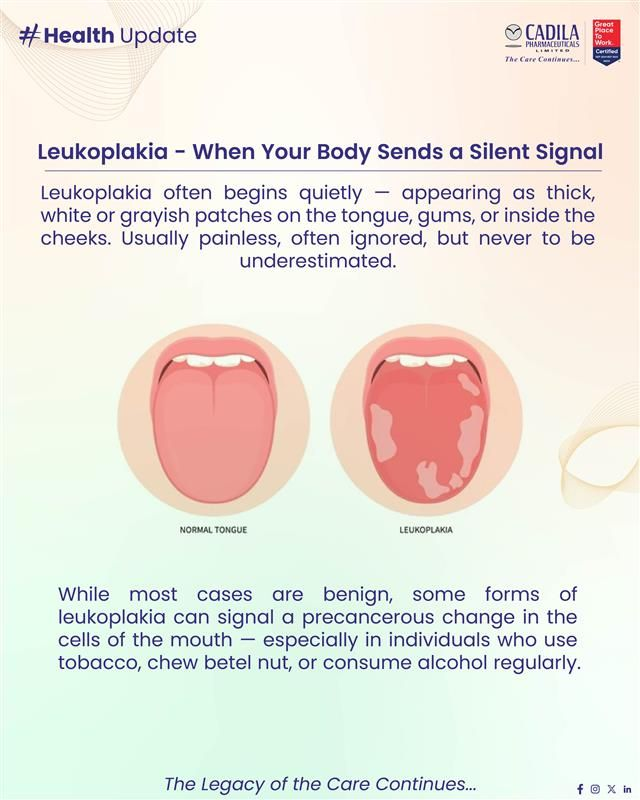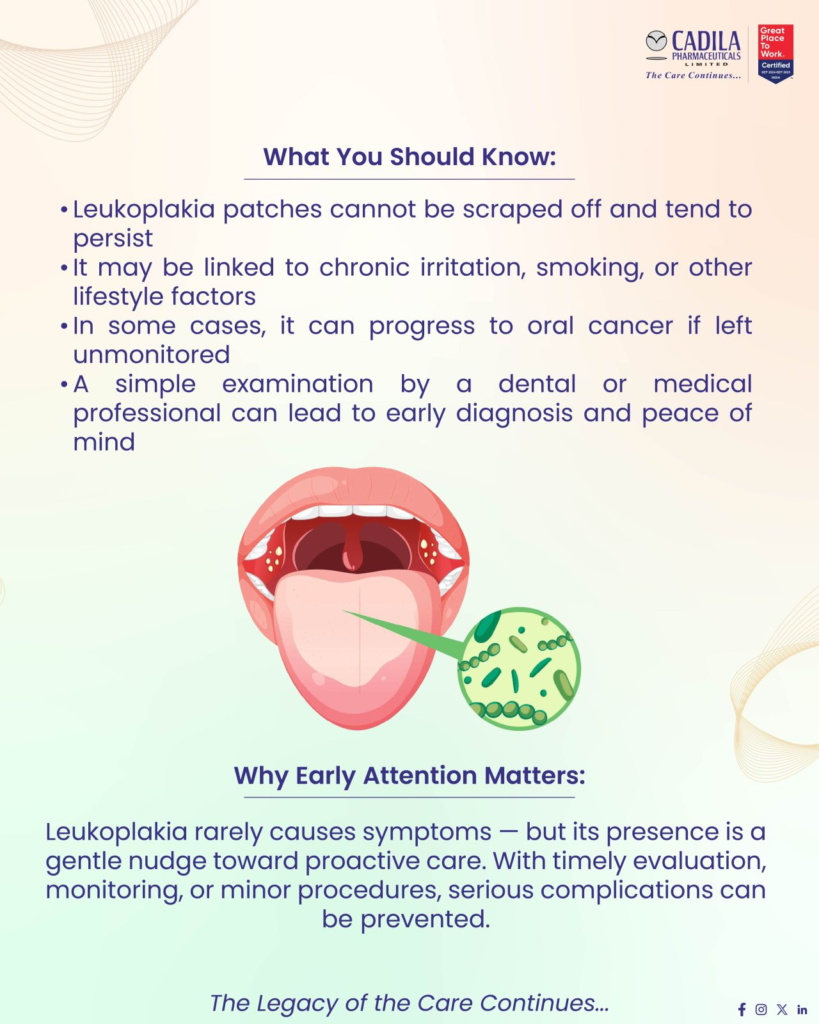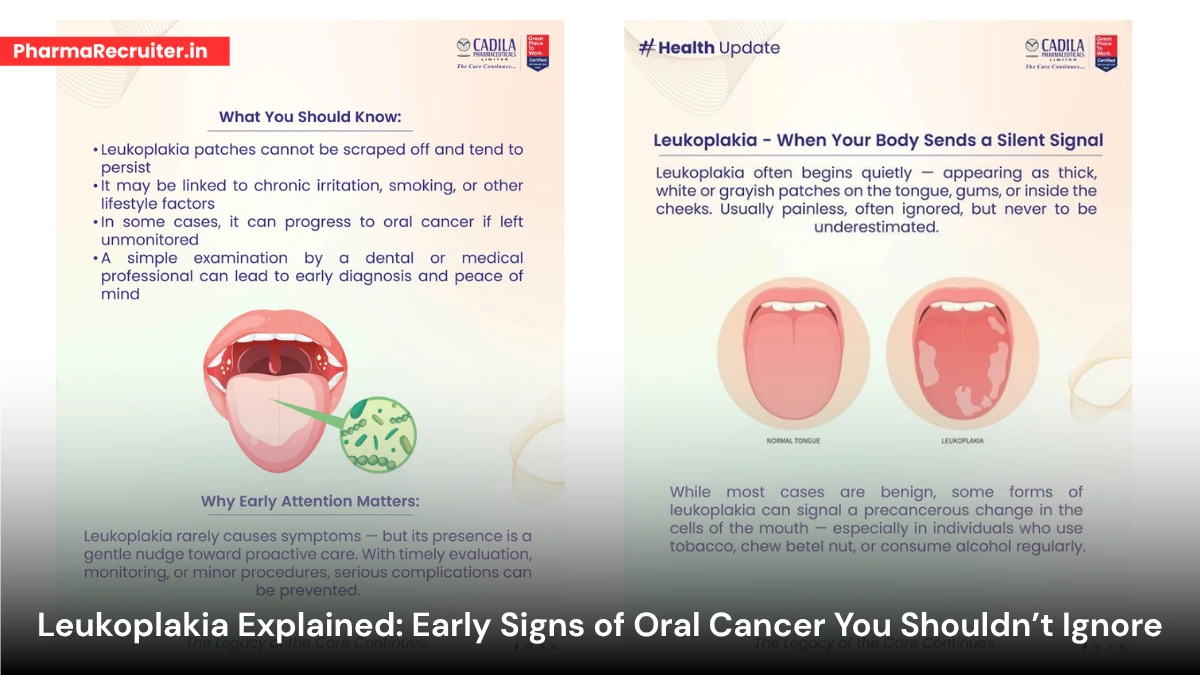Have you noticed white or gray patches on your tongue, gums, or inside your cheeks? These could be signs of leukoplakia—a potentially serious condition that may serve as an early warning for oral cancer.
Although usually painless and easy to ignore, these patches should never be taken lightly. Identifying them early through a routine dental checkup can make a critical difference in your oral and overall health.
Early Signs, Risk Factors, and Proactive Prevention
Leukoplakia is a critical oral health condition characterized by persistent white or grayish patches in the mouth. Though often painless, these patches can sometimes indicate precancerous changes, particularly in individuals with habits like tobacco use or excessive alcohol consumption. Early detection through routine dental checkups is essential for timely intervention and better health outcomes.

What Is Leukoplakia?
Leukoplakia manifests as thick, white, or gray patches on the tongue, inner cheeks, or gums. These patches cannot be scraped off and may signal a risk of oral cancer if not monitored or treated.
Key Information About Leukoplakia
| Aspect | Details |
|---|---|
| Appearance | White or grayish patches on tongue, inner cheeks, or gums |
| Symptoms | Typically painless, often unnoticed |
| Risk Factors | Smoking, chewing tobacco, betel nut, heavy alcohol use, chronic irritation |
| Diagnosis | Oral examination by a dentist or medical professional |
| Cancer Risk | Some patches may progress to oral cancer if left untreated |
Why Early Detection Is Critical
Leukoplakia’s lack of symptoms makes it easy to overlook, but ignoring these patches can lead to serious consequences. Early dental evaluation can identify precancerous changes, enabling timely intervention to prevent progression to oral cancer.
Benefits of Early Detection
- Regular Monitoring: Track changes in patches to catch abnormalities early.
- Lifestyle Modifications: Eliminate risk factors like tobacco, betel nut, or excessive alcohol use.
- Minimally Invasive Procedures: Remove abnormal tissue before it becomes cancerous.
- Improved Prognosis: Early action enhances treatment success and peace of mind.
Who Is at Risk?
Certain habits and conditions increase the likelihood of developing leukoplakia:
- Smokers and tobacco chewers
- Heavy alcohol consumers
- Betel nut or gutkha users
- Individuals with chronic mouth irritation (e.g., from ill-fitting dentures or rough teeth)

Proactive Steps to Protect Your Oral Health
Take control of your health with these practical measures:
- Schedule dental checkups at least twice a year.
- Regularly inspect your mouth for white or gray patches.
- Quit smoking, chewing tobacco, or using betel nut products.
- Limit alcohol consumption.
- Seek immediate medical advice for persistent or unusual oral symptoms.
When to Seek Medical Attention
Consult a dentist or ENT specialist promptly if you notice:
- Patches persisting longer than two weeks
- Rough, thick, or bleeding patches
- Swelling, pain, or lumps in the mouth or neck
Early intervention, such as a biopsy or removal of suspicious patches, can prevent complications and improve outcomes.
Treatment and Outlook
Leukoplakia treatment depends on the severity and underlying cause:
- Biopsy: To evaluate for precancerous or cancerous cells.
- Surgical Removal: For high-risk or persistent patches.
- Addressing Irritation: Correcting dental issues or infections causing chronic irritation.
- Lifestyle Changes: Stopping tobacco and alcohol use to prevent recurrence.
With proper management, most cases of leukoplakia can be resolved or effectively monitored to prevent progression.
Source – Read the Official Cadila Pharma Post on Leukoplakia Treatment
Don’t Ignore Your Body’s Signals
Your mouth may be sending a silent warning through leukoplakia. A quick dental checkup could be life-saving. Act now to protect your health.
Take Action Today
- Book an Oral Health Screening: Early detection is your best defense.
- Stay Informed: Regular dental visits and self-examinations are key to oral health.
Cadila Pharmaceuticals is dedicated to promoting health awareness and encourages routine dental screenings to support early detection and management of conditions like leukoplakia.
Frequently Asked Questions
Is leukoplakia always cancerous?
No, most cases are benign, but some may be precancerous and require monitoring.
Can leukoplakia resolve on its own?
Mild cases may disappear if irritants like tobacco or alcohol are eliminated.
Is leukoplakia painful?
It’s typically painless, which makes regular checkups crucial for early detection.
Can dentists diagnose leukoplakia?
Yes, dentists can identify and monitor leukoplakia during routine exams.

